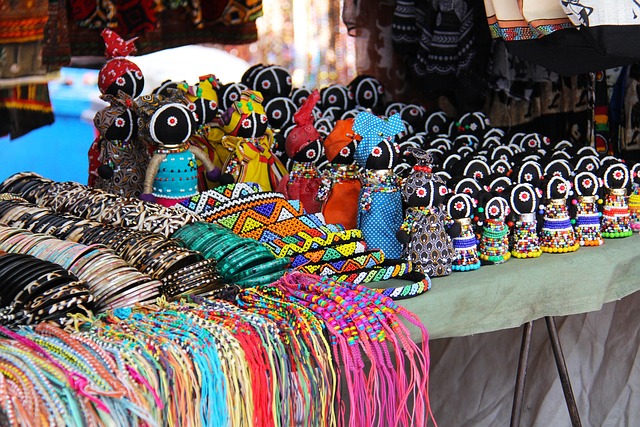4.4: Reportage - L'art africain ancien influence l'art contemporain
- Page ID
- 174367
\( \newcommand{\vecs}[1]{\overset { \scriptstyle \rightharpoonup} {\mathbf{#1}} } \)
\( \newcommand{\vecd}[1]{\overset{-\!-\!\rightharpoonup}{\vphantom{a}\smash {#1}}} \)
\( \newcommand{\id}{\mathrm{id}}\) \( \newcommand{\Span}{\mathrm{span}}\)
( \newcommand{\kernel}{\mathrm{null}\,}\) \( \newcommand{\range}{\mathrm{range}\,}\)
\( \newcommand{\RealPart}{\mathrm{Re}}\) \( \newcommand{\ImaginaryPart}{\mathrm{Im}}\)
\( \newcommand{\Argument}{\mathrm{Arg}}\) \( \newcommand{\norm}[1]{\| #1 \|}\)
\( \newcommand{\inner}[2]{\langle #1, #2 \rangle}\)
\( \newcommand{\Span}{\mathrm{span}}\)
\( \newcommand{\id}{\mathrm{id}}\)
\( \newcommand{\Span}{\mathrm{span}}\)
\( \newcommand{\kernel}{\mathrm{null}\,}\)
\( \newcommand{\range}{\mathrm{range}\,}\)
\( \newcommand{\RealPart}{\mathrm{Re}}\)
\( \newcommand{\ImaginaryPart}{\mathrm{Im}}\)
\( \newcommand{\Argument}{\mathrm{Arg}}\)
\( \newcommand{\norm}[1]{\| #1 \|}\)
\( \newcommand{\inner}[2]{\langle #1, #2 \rangle}\)
\( \newcommand{\Span}{\mathrm{span}}\) \( \newcommand{\AA}{\unicode[.8,0]{x212B}}\)
\( \newcommand{\vectorA}[1]{\vec{#1}} % arrow\)
\( \newcommand{\vectorAt}[1]{\vec{\text{#1}}} % arrow\)
\( \newcommand{\vectorB}[1]{\overset { \scriptstyle \rightharpoonup} {\mathbf{#1}} } \)
\( \newcommand{\vectorC}[1]{\textbf{#1}} \)
\( \newcommand{\vectorD}[1]{\overrightarrow{#1}} \)
\( \newcommand{\vectorDt}[1]{\overrightarrow{\text{#1}}} \)
\( \newcommand{\vectE}[1]{\overset{-\!-\!\rightharpoonup}{\vphantom{a}\smash{\mathbf {#1}}}} \)
\( \newcommand{\vecs}[1]{\overset { \scriptstyle \rightharpoonup} {\mathbf{#1}} } \)
\( \newcommand{\vecd}[1]{\overset{-\!-\!\rightharpoonup}{\vphantom{a}\smash {#1}}} \)
\(\newcommand{\avec}{\mathbf a}\) \(\newcommand{\bvec}{\mathbf b}\) \(\newcommand{\cvec}{\mathbf c}\) \(\newcommand{\dvec}{\mathbf d}\) \(\newcommand{\dtil}{\widetilde{\mathbf d}}\) \(\newcommand{\evec}{\mathbf e}\) \(\newcommand{\fvec}{\mathbf f}\) \(\newcommand{\nvec}{\mathbf n}\) \(\newcommand{\pvec}{\mathbf p}\) \(\newcommand{\qvec}{\mathbf q}\) \(\newcommand{\svec}{\mathbf s}\) \(\newcommand{\tvec}{\mathbf t}\) \(\newcommand{\uvec}{\mathbf u}\) \(\newcommand{\vvec}{\mathbf v}\) \(\newcommand{\wvec}{\mathbf w}\) \(\newcommand{\xvec}{\mathbf x}\) \(\newcommand{\yvec}{\mathbf y}\) \(\newcommand{\zvec}{\mathbf z}\) \(\newcommand{\rvec}{\mathbf r}\) \(\newcommand{\mvec}{\mathbf m}\) \(\newcommand{\zerovec}{\mathbf 0}\) \(\newcommand{\onevec}{\mathbf 1}\) \(\newcommand{\real}{\mathbb R}\) \(\newcommand{\twovec}[2]{\left[\begin{array}{r}#1 \\ #2 \end{array}\right]}\) \(\newcommand{\ctwovec}[2]{\left[\begin{array}{c}#1 \\ #2 \end{array}\right]}\) \(\newcommand{\threevec}[3]{\left[\begin{array}{r}#1 \\ #2 \\ #3 \end{array}\right]}\) \(\newcommand{\cthreevec}[3]{\left[\begin{array}{c}#1 \\ #2 \\ #3 \end{array}\right]}\) \(\newcommand{\fourvec}[4]{\left[\begin{array}{r}#1 \\ #2 \\ #3 \\ #4 \end{array}\right]}\) \(\newcommand{\cfourvec}[4]{\left[\begin{array}{c}#1 \\ #2 \\ #3 \\ #4 \end{array}\right]}\) \(\newcommand{\fivevec}[5]{\left[\begin{array}{r}#1 \\ #2 \\ #3 \\ #4 \\ #5 \\ \end{array}\right]}\) \(\newcommand{\cfivevec}[5]{\left[\begin{array}{c}#1 \\ #2 \\ #3 \\ #4 \\ #5 \\ \end{array}\right]}\) \(\newcommand{\mattwo}[4]{\left[\begin{array}{rr}#1 \amp #2 \\ #3 \amp #4 \\ \end{array}\right]}\) \(\newcommand{\laspan}[1]{\text{Span}\{#1\}}\) \(\newcommand{\bcal}{\cal B}\) \(\newcommand{\ccal}{\cal C}\) \(\newcommand{\scal}{\cal S}\) \(\newcommand{\wcal}{\cal W}\) \(\newcommand{\ecal}{\cal E}\) \(\newcommand{\coords}[2]{\left\{#1\right\}_{#2}}\) \(\newcommand{\gray}[1]{\color{gray}{#1}}\) \(\newcommand{\lgray}[1]{\color{lightgray}{#1}}\) \(\newcommand{\rank}{\operatorname{rank}}\) \(\newcommand{\row}{\text{Row}}\) \(\newcommand{\col}{\text{Col}}\) \(\renewcommand{\row}{\text{Row}}\) \(\newcommand{\nul}{\text{Nul}}\) \(\newcommand{\var}{\text{Var}}\) \(\newcommand{\corr}{\text{corr}}\) \(\newcommand{\len}[1]{\left|#1\right|}\) \(\newcommand{\bbar}{\overline{\bvec}}\) \(\newcommand{\bhat}{\widehat{\bvec}}\) \(\newcommand{\bperp}{\bvec^\perp}\) \(\newcommand{\xhat}{\widehat{\xvec}}\) \(\newcommand{\vhat}{\widehat{\vvec}}\) \(\newcommand{\uhat}{\widehat{\uvec}}\) \(\newcommand{\what}{\widehat{\wvec}}\) \(\newcommand{\Sighat}{\widehat{\Sigma}}\) \(\newcommand{\lt}{<}\) \(\newcommand{\gt}{>}\) \(\newcommand{\amp}{&}\) \(\definecolor{fillinmathshade}{gray}{0.9}\)Vous allez regarder un reportage sur l'art africain.
Avant le visionnement. Faites les activités suivantes avant de regarder le reportage.
Trouvez quelqu’un qui… Dans cette activité, parlez à plusieurs personnes dans la classe, et parlez uniquement en français ! Changez de partenaire pour chaque question. Vous pouvez commencer chaque question avec « Est-ce que tu … » . Répondez aux questions par des phrases complètes. Si la réponse est positive, demandez le nom de cette personne.
Est-ce que tu....
- as déjà visité l’Afrique
- voudrais visiter l’Afrique dans l’avenir
- peux nommer un artiste africain
- peux nommer un artiste européen qui a été influencé par l’art africain
- as déjà acheté de l’art africain
- voudrais décorer ta maison avec de l’art africain
Dans Google Images, tapez « l’art africain ». Quelles images voyez-vous ? Avez un partenaire, écrivez quelques mots que vous associez avec ces images. Example : masque
Après le visionnement. Regardez maintenant la vidéo et faites les activités qui suivent.
Vrai ou Faux ? Décidez si les phrases suivantes sont vraies ou fausses. Si une phrase est fausse, corrigez-la.
- L’art africain est réduit à un modèle plastique.
- Avec le temps et les connaissances, cette conception a changé.
- L’exposition Ex Africa permet de renforcer les idées reçues sur l’art africain.
- Les artistes à Ex Africa dénoncent la conception primitive de l’art africain.
- Selon Philippe Dagen, le commissaire de l’expo Ex Africa, l’idée du primitivisme de l’art africain est positive.
- Auparavant, l’art africain est considéré plus que des objets de décoration.
- La présente exposition permet d’établir un dialogue entre l’art africain ancien et l’art contemporain.
- Les artistes africains présents à Ex Africa à travers leurs œuvres présentent les enjeux de l’Afrique actuelle.
- L’artiste béninois Romuald Hazoumè et son installation No Return met en évidence les risques de l’immigration transatlantique avec son usage des semelles de tongs.
- L’artiste franco-béninois Emo De Medeiros, avec son Electro Fétiche, donne à voir une vision futuriste de l’art africain.
- Edification est une série de 90 photographies sur les rites d’initiation à la vie en Afrique.
- Les casques de réalité virtuelle sont représentées positivement dans les photos de l’artiste franco-sénégalais.

En groupes de 3 ou 4, discutez les questions suivantes.
- Quelle est la conséquence des récentes expositions d'art africain dans le monde ?
- En ce qui concerne l’art contemporain, quelle est la question fondamentale qui se pose aujourd’hui par rapport à l’art africain ?
- Combien d’artistes ont-ils pris part à l’exposition Ex Africa ?
- Pourquoi les objets d’art africain sont frappés par le consumérisme ?
- Comment l’artiste franco-béninois Emo De Medeiros établit-il un dialogue avec les visiteurs de l’exposition ?
- Comment Emo De Medeiros définit-il l’IFA ?
- Comment la dernière partie de l’exposition est-elle nommée ?
- En quoi consiste le travail du photographe franco-sénégalais ?


